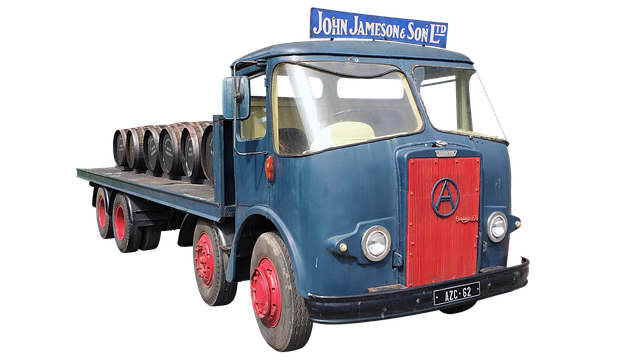Small fleet operations need tailored fleet insurance coverage to build resilience against diverse risks like accidents, damage, theft, natural disasters, and operational uncertainties. By evaluating vehicle type, age, driving conditions, and business-specific risks, operators can identify gaps in their policies. Regular reviews ensure adequate protection aligned with evolving needs, fostering stability and adaptability for navigating challenges. Case studies show that customized fleet insurance coverage significantly improves financial security and competitive edge for small fleets facing unique operational risks.
In the dynamic world of small fleet operations, building resilience is paramount. This isn’t just about choosing the right vehicle; it’s about ensuring robust fleet insurance coverage that adapts to your unique risks. Our comprehensive guide navigates the intricacies of fleet insurance coverage, equipping you with strategies to assess risk, identify policy gaps, and enhance operational resilience. From understanding key provisions to leveraging case studies, we provide essential insights for small fleet owners aiming to future-proof their businesses.
Understanding Fleet Insurance Coverage: What You Need to Know

Understanding Fleet Insurance Coverage is a critical step in building resilience for any small fleet operation. This type of insurance goes beyond standard car or vehicle policies, catering specifically to the unique risks and needs of commercial fleets. It encompasses not just liability for accidents, but also physical damage coverage for each vehicle, as well as protection against theft, vandalism, and natural disasters. Fleet insurance often includes additional benefits like roadside assistance, rental cars during repairs, and legal defense in case of disputes.
When evaluating fleet insurance coverage, consider factors such as the type and age of vehicles, driving conditions, and your business’s specific operations. High-risk industries or regions might require more comprehensive policies. Regular reviews and adjustments to your fleet insurance are essential as your business grows or operational landscapes change, ensuring you always have adequate protection.
Assessing Risk and Identifying Gaps in Your Policy

Evaluating your fleet’s exposure is a critical step in enhancing resilience. It involves meticulously examining each vehicle, driver, and operational aspect to identify potential risks. This process includes analyzing accident histories, understanding high-risk routes or tasks, and assessing the impact of various perils like weather conditions, mechanical failures, and human error. By quantifying these risks, you can determine where your existing fleet insurance coverage falls short.
Gaps in your policy might reveal limitations in liability protection, inadequate compensation for damaged vehicles or lost revenue during downtime, or a lack of specific coverage for specialized operations. Identifying these gaps allows you to tailor your insurance plan, ensuring comprehensive fleet insurance coverage that addresses unique operational risks and vulnerabilities.
Strategies for Enhancing Resilience with Comprehensive Insurance Planning

In the face of operational uncertainties, small fleet operations can significantly boost their resilience with strategic fleet insurance planning. Comprehensive insurance coverage goes beyond basic liability by including protection against various risks such as vehicle damage, driver errors, and legal liabilities. This holistic approach ensures that businesses are not just compliant but also adequately shielded from financial setbacks.
By tailoring fleet insurance to specific operational needs, companies can mitigate the impact of unforeseen events like accidents, natural disasters, or equipment failures. Regular reviews and adjustments to the insurance plan allow for the inclusion of emerging risks and changes in regulations. Such proactive measures foster a culture of preparedness, enabling small fleet operations to navigate challenges with enhanced stability and adaptability.
Case Studies: Success Stories of Small Fleets Through Robust Insurance Protection

Small fleet operations, often characterized by their agility and local focus, face unique risks that demand tailored solutions. Case studies from various regions highlight the transformative power of robust fleet insurance coverage in mitigating these challenges. For instance, a small trucking company based in a rural area successfully navigated an unexpected surge in fuel costs and mechanical failures due to their comprehensive insurance plan, which included protective measures against rising fuel prices and comprehensive vehicle coverage.
Similarly, a fleet of delivery vehicles operating within a bustling urban environment experienced reduced downtime and lower repair bills thanks to their insured protection against collision damage, theft, and third-party liability. These success stories underscore the importance of fleet insurance coverage in enhancing operational resilience, ensuring financial stability, and enabling small fleets to compete effectively amidst unforeseen circumstances.
Building resilience in small fleet operations is not just about minimizing losses; it’s about maximizing protection and opportunities. By understanding fleet insurance coverage, assessing risks proactively, and implementing comprehensive planning, operators can navigate uncertainties with confidence. This strategic approach, backed by case studies showcasing successful small fleets, underscores the transformative power of robust insurance planning in enhancing operational efficiency and financial stability. Prioritizing fleet insurance coverage is a key step towards ensuring your business can weather any storm.
